When a child’s prescription changes from a brand-name drug to a generic, it’s not just a label swap. For kids, especially those with chronic conditions like asthma, epilepsy, or heart disease, even small changes in medication can have big consequences. Parents often don’t realize that the pill they’re handed at the pharmacy might look different, taste different, or even work differently-even though it’s supposed to be the same. And that’s where things get risky.
Why Switching Medications for Kids Is Different
Generics are cheaper because they don’t need to repeat expensive clinical trials. The FDA says they’re bioequivalent to brand-name drugs, meaning they deliver the same active ingredient at similar levels in the bloodstream. That’s fine for adults. But kids aren’t small adults. Their bodies absorb, process, and clear drugs in ways that change as they grow. For example, a 3-month-old baby metabolizes omeprazole-used for reflux-mainly through the CYP2C19 enzyme, which isn’t fully developed yet. An adult’s body handles it differently. So even if a generic omeprazole suspension passes adult bioequivalence tests, it might not work the same in an infant. That’s not speculation. It’s documented in FDA materials from 2017. The same problem shows up with drugs like tacrolimus, used after organ transplants. A 2015 study in Pediatric Transplantation found that children switched from brand-name Prograf to generic tacrolimus had, on average, a 14% drop in blood levels. That might not sound like much, but for a transplant patient, even a small dip can trigger rejection. No one warned the parents. No one told the doctor. The pharmacy just filled the cheaper version.The Hidden Risks: Inactive Ingredients and Formulation Changes
The active ingredient in a generic is identical to the brand name. But everything else? Not always. Fillers, dyes, flavors, and preservatives can vary. For most people, that’s harmless. For some kids, it’s not. Children with allergies or sensitivities can react to dyes like FD&C Red No. 40 or artificial flavors used in chewables or suspensions. One parent reported her son broke out in hives after switching from brand-name Adderall to a generic version. The active ingredient was the same-but the color and coating changed. The doctor didn’t know. The pharmacist didn’t ask. The child’s school nurse didn’t have the new label. Even the physical form matters. A child with cerebral palsy might struggle to swallow a larger tablet. A toddler with GERD needs a liquid that doesn’t clump or separate. If the generic version uses a different binder or suspending agent, the dose might not be uniform. Shake the bottle? Maybe half the dose ends up in the syringe. That’s not theoretical. It’s happened.How Insurance Drives the Switch-And Why It’s Dangerous
Most switches aren’t initiated by doctors. They’re forced by insurers. This is called non-medical formulary switching (NMFS). It’s when a health plan changes which drugs it covers to save money-not because the drug is better, but because it’s cheaper. Between 2009 and 2019, generics saved the U.S. healthcare system $2.2 trillion. That’s huge. But those savings often come at the cost of children’s stability. UnitedHealthcare alone changed formularies in 2021 affecting 4.2 million pediatric patients. One child with asthma might be switched from Flovent to a generic inhaler. Then, six months later, the insurer cuts a deal with another manufacturer-and switches again. Families end up cycling through different brands, different colors, different devices. Each switch means relearning how to use the inhaler. Each change risks poor technique. And poor technique? It can cut drug delivery by 50-80%. That’s not a minor inconvenience. It’s a life-threatening gap in care.What Happens When Kids Are Switched Too Often
A 2023 meta-analysis in Pediatrics found that children with chronic conditions who experienced medication switches had an 18% higher rate of hospitalization than those who stayed on the same drug. Why?- Adherence drops: When a pill looks different, parents worry it’s wrong. They might skip doses or double up.
- Confusion spreads: Teachers, babysitters, and school nurses get confused too. One mom told her daughter’s school nurse the new green pill was “the same as the blue one.” The nurse didn’t know how to verify that.
- Monitoring gets missed: Blood tests for drugs like phenytoin or levothyroxine need to be timed and interpreted carefully. Switching without rechecking levels is like driving blindfolded.
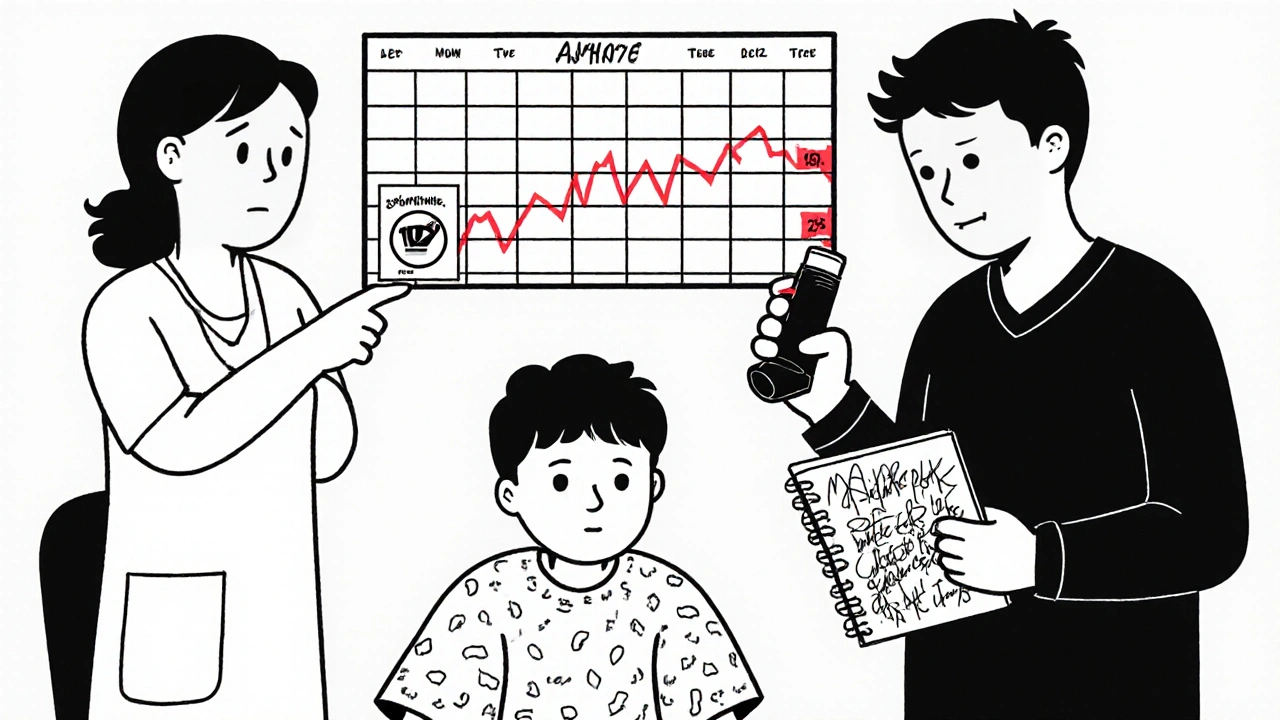
Which Medications Are Most Risky to Switch?
Not all drugs are created equal. Some are far more dangerous to switch than others. The FDA specifically flags these categories as high-risk for children:- AEDs (anti-epileptic drugs): Phenytoin, valproate, carbamazepine. Tiny changes in blood levels can trigger seizures.
- Cardiac drugs: Digoxin, amiodarone. Narrow therapeutic window. Even 10% variation can cause toxicity or failure.
- Immunosuppressants: Tacrolimus, cyclosporine. Used after transplants. Switching can mean organ rejection.
- Psychiatric drugs: SSRIs, stimulants. Mood and behavior changes can be subtle but devastating in kids.
- Cancer drugs: Methotrexate, vincristine. Dosing is weight-based and precise. Generic variability can be deadly.
What Parents Can Do
You don’t have to accept a switch blindly. Here’s what to do:- Ask why: “Is this switch based on medical need, or just cost?” If the answer is cost, ask for a medical exemption.
- Check the label: Compare the shape, color, size, and imprint of the new pill. If it’s different, ask if it’s the same formulation.
- Verify the dose: If switching from a liquid to a tablet, or vice versa, confirm the dose is equivalent. Ask the pharmacist to show you the conversion.
- Monitor closely: Watch for changes in behavior, sleep, appetite, or symptoms. Keep a log. Bring it to the next appointment.
- Know your rights: In 7 states and Washington, D.C., pharmacists must get your consent before switching. In 19 states, they can switch without telling you. Check your state’s rules.
What Doctors and Pharmacists Should Be Doing
Providers are caught in the middle. Insurance pressures them. Parents trust them. But too many don’t know the risks. A 2018 survey found only 37% of pharmacists routinely discussed switching risks with caregivers of children on chronic meds. That’s unacceptable. Doctors need to:- Prescribe by brand name when medically necessary (write “dispense as written” or “do not substitute”).
- Document why a specific formulation is needed-especially for NTI drugs.
- Follow up with blood tests after any switch.
- Use the same pharmacy so records stay consistent.
- Ask if the patient is a child before dispensing.
- Explain changes in appearance or delivery method.
- Offer training on inhalers, nebulizers, or feeding tubes if the device changed.
- Notify the prescriber if a child has a reaction after a switch.
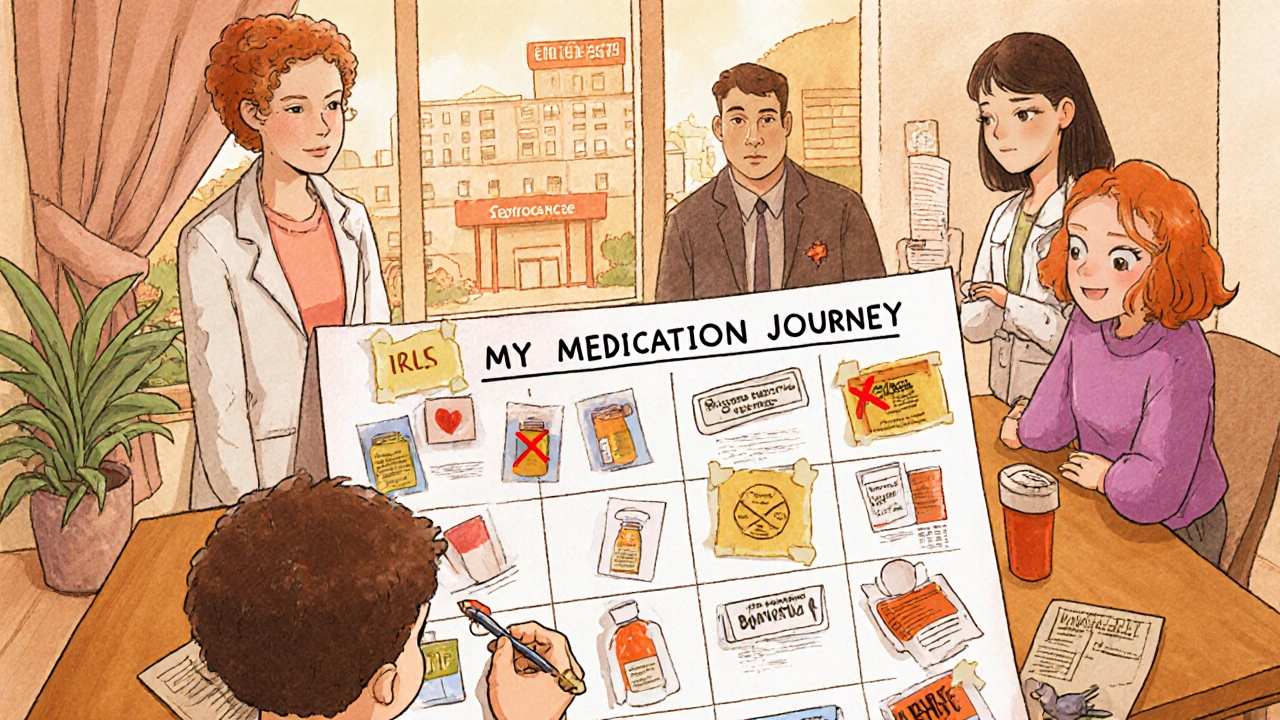
The Bigger Picture: Where Do We Go From Here?
The system is broken. Generics saved billions, but children are paying the price in health outcomes. The FDA has acknowledged the problem. Their 2022 Pediatric Formulation Initiative aims to improve drug forms for kids. The 2023 PREEMIE Reauthorization Act includes funding for pediatric drug development. California now requires Medicaid plans to have pediatric review committees for formulary changes. But until the FDA requires pediatric-specific bioequivalence studies-especially for narrow therapeutic index drugs-switching will remain a gamble. Right now, only 12% of generic approvals between 2010 and 2020 included pediatric data. The American Academy of Pediatrics is finalizing new guidelines for generic prescribing in children, expected by late 2024. That’s a step forward. But change won’t come fast enough for the kids who are being switched today.Frequently Asked Questions
Are generic medications safe for children?
For many children, yes-especially for common conditions like ear infections or allergies. But for drugs with narrow therapeutic windows-like seizure meds, transplant drugs, or heart medications-the risks are higher. Bioequivalence standards were designed for adults, not kids. Always ask if the generic has been tested in children.
Can a child have an allergic reaction to a generic drug?
Yes. While the active ingredient is the same, the inactive ingredients-like dyes, fillers, or flavorings-can differ. A child sensitive to red dye or artificial sweeteners might react to a generic version even if the brand-name version was fine. Watch for rashes, swelling, or breathing changes after a switch.
How do I know if my child’s medication was switched?
Check the pill or liquid’s appearance. Compare the shape, color, size, and imprint to what you’ve seen before. Look at the label for the manufacturer’s name. If it’s different from before, ask the pharmacist if it’s a generic substitution. Don’t assume it’s the same just because the name is the same.
Should I ask my doctor to prescribe only brand-name drugs for my child?
If your child takes a high-risk medication-like an anti-seizure drug, transplant medicine, or cardiac drug-yes. You have the right to request “dispense as written” or “do not substitute” on the prescription. It’s your child’s health. Push for stability, not savings.
What if my insurance won’t cover the brand-name drug?
Ask your doctor to file a prior authorization or medical exception. Explain why switching could harm your child’s health. Include lab results, hospitalizations, or behavioral changes linked to past switches. Many insurers will approve the brand name if there’s documented medical need.
Next Steps for Families
If your child is on a chronic medication:- Keep a written list of all medications, including brand names, doses, and manufacturers.
- Take a photo of the pill or bottle before each refill.
- Call your pharmacy before picking up a refill to confirm it hasn’t changed.
- Report any changes in behavior, symptoms, or side effects to your doctor immediately.
- Ask if your state requires consent before switching pediatric meds. If not, contact your state representative.

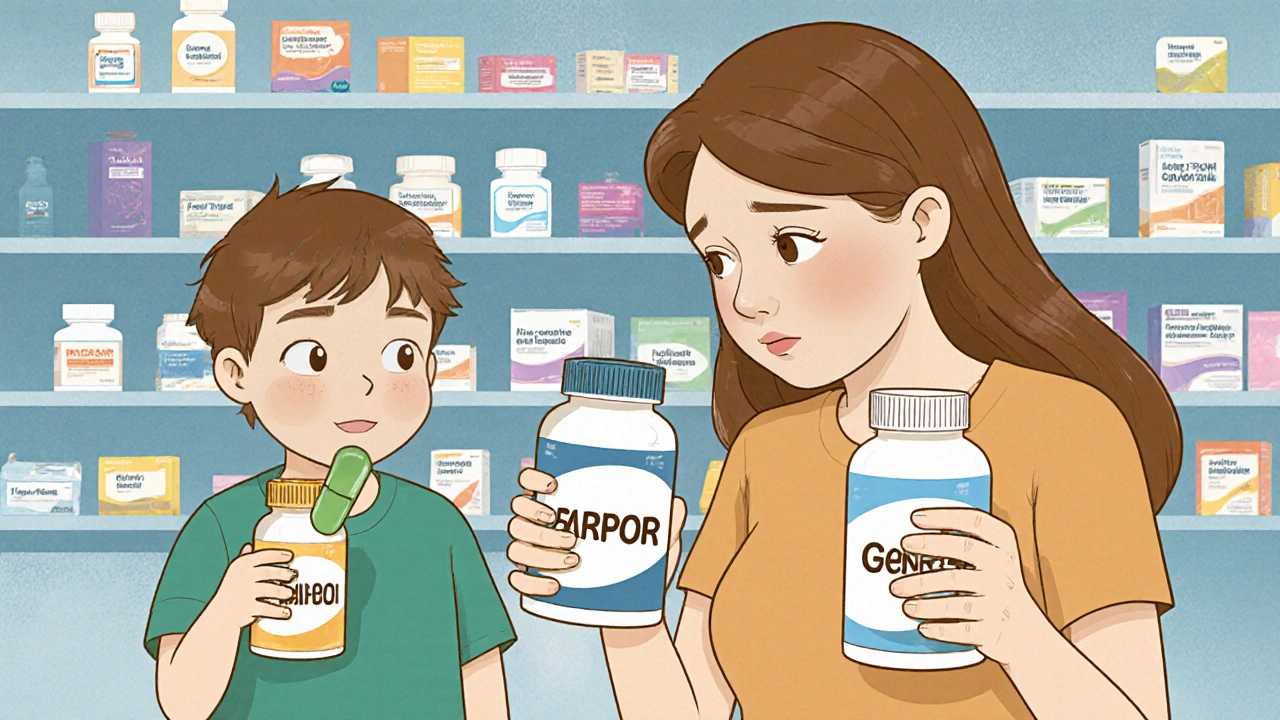
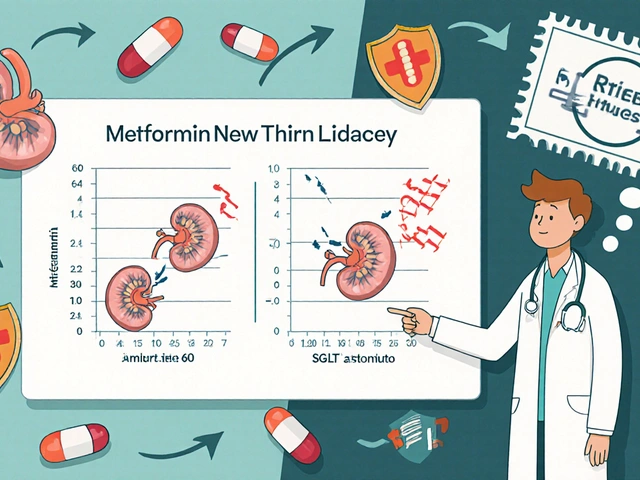
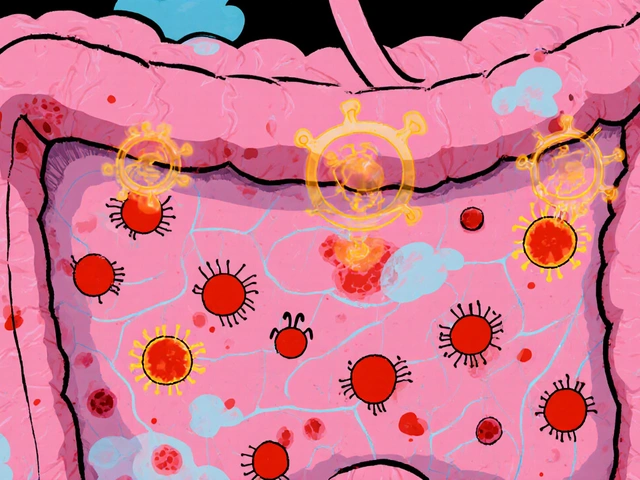
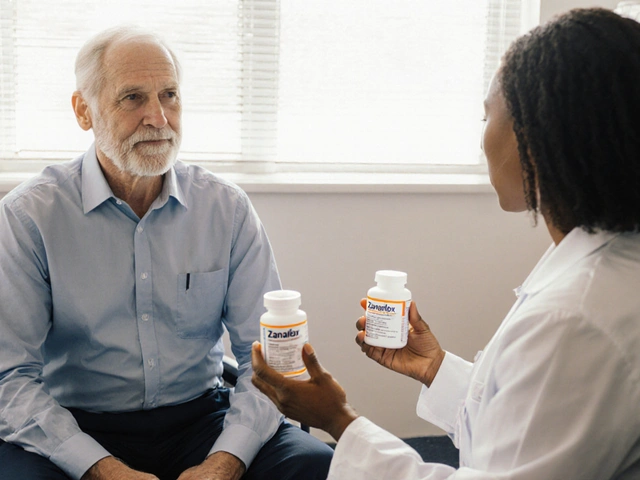
satya pradeep
Bro this is wild. I thought generics were just cheaper versions of the same thing. Turns out my kid’s seizure med switch might’ve been a russian roulette round. No one told me the filler could mess with absorption. I’m checking every pill now. 😳
Prem Hungry
As a parent of a child on tacrolimus, I can confirm: the drop in blood levels was real. We went from Prograf to generic, and within two weeks, his creatinine spiked. No warning. No follow-up. Just a cheaper pill in a different bottle. The hospital had to run emergency levels. This isn’t about cost-it’s about survival.
Leslie Douglas-Churchwell
Let’s be real-the FDA is a puppet of Big Pharma & Big Insurance. 🤡 They approved generics based on adult data because kids don’t vote. Meanwhile, our children are lab rats for corporate profit margins. Did you know 92% of pediatric drug studies are funded by the same companies that make the generics? 🧪💸 #PharmaControl #PediatricBetrayal
shubham seth
This isn’t a healthcare issue-it’s a capitalist massacre. They took a system built for adults, slapped a ‘pediatric’ sticker on it, and called it progress. Meanwhile, toddlers are getting uneven doses because some bean counter decided a $0.02 savings on a suspending agent was worth risking a seizure. The system doesn’t care if your kid dies-it cares if the quarterly report looks pretty.
Kathryn Ware
My daughter’s on carbamazepine, and we’ve been through three different generics in 18 months. Each time, her sleep got worse, her mood swung harder, and her school performance tanked. I started taking photos of every pill, calling the pharmacy before each refill, and logging every change. It’s exhausting, but it’s the only way to protect her. If you’re a parent of a kid on a narrow-therapeutic drug-DO THIS. Don’t wait for a crisis. Be the nag. Be the pain in the ass. It’s worth it. 💪❤️
kora ortiz
My son’s on phenytoin and I refused the switch. I called the insurer, the doctor, the pharmacist, and my state rep. They said no. I said fine I’ll pay out of pocket. I didn’t ask permission. I didn’t wait for approval. I did what was right. Your kid’s life isn’t a spreadsheet.
Jeremy Hernandez
Look I get it. But come on. You’re telling me a kid can’t handle a generic Adderall but can handle the 50 different meds their mom’s on? This is just fear-mongering. Most kids are fine. The parents just panic because the pill looks different. Chill. It’s the same molecule.
Tarryne Rolle
Isn’t it ironic? We live in a world where we can map the human genome but we still treat children like tiny adults when dosing meds. We’ve outsourced empathy to cost-benefit analysis. The real tragedy isn’t the switch-it’s that we’ve normalized it. We’ve forgotten that medicine is supposed to heal, not optimize.
Kyle Swatt
They say generics save billions. But who’s paying the real price? The kid who has a seizure because the new pill didn’t dissolve right. The mom who stays up all night checking blood levels. The teacher who doesn’t know why the kid’s behavior changed. We don’t count those costs. We don’t even see them. We just see the line item on the insurance statement. That’s not efficiency. That’s moral laziness.
saurabh lamba
why do parents always freak out? if the active ingredient is same then its same. its just placebo effect. also why do we even need brand name drugs? capitalism is fake. just take the generic and chill
Kiran Mandavkar
Oh please. You think your child is special? The FDA doesn’t care about your little prince or princess. They care about the aggregate. The 95% who are fine. The other 5%? Well, that’s the cost of progress. If your kid can’t handle a generic, maybe they’re just not built for modern medicine. Cry me a river.
Eric Healy
My son’s on levothyroxine. Switched to generic. TSH went from 2.1 to 7.8. We had to go back to brand. Took 3 months. Insurance denied. I had to appeal. Now they know my kid’s name. But guess what? They still try to switch him every 6 months. It’s a game. And we’re the pawns.
Shannon Hale
THIS. IS. A. MASS. MURDER. 🚨 I’m not exaggerating. We’re poisoning children with corporate greed. Every time a pharmacist swaps a pill without consent, they’re playing God with a kid’s brain. And the worst part? No one’s going to jail. No one’s getting fined. Just another kid on the pile. I’m crying. I’m screaming. And nobody’s listening.